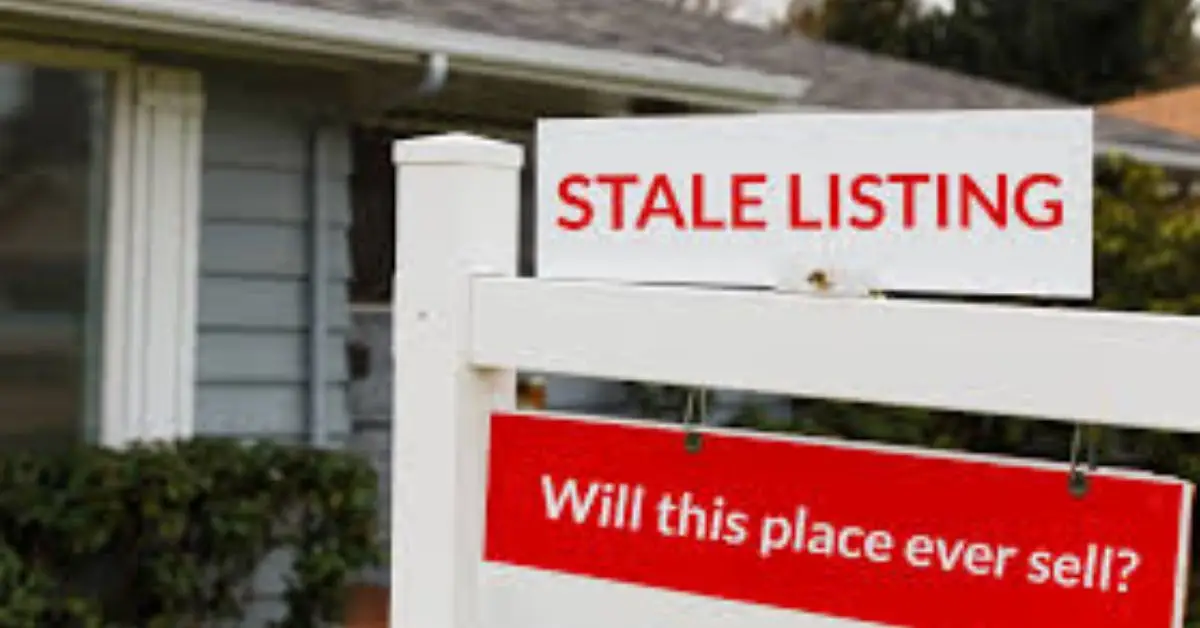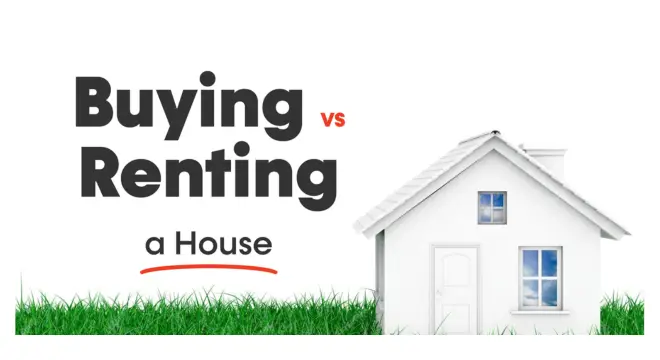Should You Take Your House Off the Market? These 6 Signs Say Yes
Selling your home isn’t just a financial decision. It’s personal. You’ve invested time, money, and a lot of emotional energy into the process. So when your listing sits on the market with no real traction, it’s frustrating—and confusing.
At some point, you start wondering if keeping it listed is doing more harm than good. I’ve seen this happen more times than I can count. What most sellers don’t realize is that an unsold listing doesn’t just sit quietly in the background—it actively shapes how buyers see your home. And usually, not in your favor.
The reality is, after 60 to 90 days with little activity, buyers start assuming something’s wrong. That’s not just theory. According to Redfin data and national agent experience, homes that linger too long without movement are flagged by buyers as overpriced, problematic, or both.
In today’s market, timing and perception matter more than ever. Which is why sometimes, the smartest move isn’t to keep pushing. It’s to stop, reassess, and come back stronger.
In this article, I’m going to walk you through six clear signs that it might be time to take your home off the market. Not permanently. But long enough to regroup and protect your long-term goals. Because if you’re feeling that pit in your stomach—the one that says something’s off—you’re probably right.
So let’s take a closer look at the signals. This isn’t about giving up. It’s about taking back control.
Have you hit that wall yet? What’s been the tipping point—radio silence from buyers, bad offers, or just a gut feeling that this isn’t working?
Sign 1: Your Home Has Become a Stale Listing
If your home’s been sitting on the market for 60 to 90 days without serious interest, it’s likely gone stale. That’s not just a casual label—it’s a red flag to buyers.

Liz Wood Realty
In real estate, time equals perception. The longer a home sits, the more buyers start asking themselves: Why hasn’t anyone else made an offer? Even if your home is solid, the silence creates doubt. It stops being a new opportunity and starts feeling like old news.
Most MLS systems publicly show how long your property has been listed. And buyers pay attention. They assume long days on market mean problems: poor pricing, hidden issues, desperate seller. That impression sticks.
According to Redfin, once a listing crosses the 60-day mark without offers, the odds of a full-price sale drop significantly. And if you’ve already reduced the price once or twice? That only reinforces buyer suspicion.
At this point, staying listed may be doing more damage than good. You’re not just losing momentum—you’re actively losing buyer trust. And sometimes, a strategic pause is the only way to reset that clock.
If your listing has stalled, don’t wait for it to get worse. Taking it off the market for a few weeks (or months) might be your best shot at making a stronger second impression later.
Sign 2: You’re Only Getting Lowball Offers
Let’s be honest—lowball offers sting. And when they’re the only offers you’re getting, it’s not just insulting. It’s a signal that something isn’t clicking with your listing.
Most buyers won’t tell you your home feels overpriced—they’ll just offer what they think it’s worth. And if you’re repeatedly getting offers well below list price, it usually means one of three things: your pricing is off, your photos or staging aren’t compelling, or the market is telling you now’s not the time.
I’ve seen sellers hold firm on price, thinking a better offer will come. But weeks pass, and nothing changes. The listing just gets older, and buyer confidence drops even further. You can’t negotiate from a position of weakness—and a stale, overpriced listing is exactly that.
Barbara Corcoran, one of the top voices in real estate, has said that in many cases, it’s smarter to take the home off the market completely rather than chasing the price downward. Why? Because every price cut can weaken your leverage. Buyers start circling, expecting you to fold.
Instead of riding that downward spiral, you may be better off stepping back, reassessing your strategy, and relaunching fresh when the timing is right.
Repeated low offers aren’t just annoying—they’re feedback. If you’re not willing to meet the market where it is, it might be time to regroup and come back with a stronger hand.
Sign 3: A Major Personal or Financial Change Just Happened
Sometimes, the market isn’t the problem—you are. And that’s okay.

Life happens. Maybe you or your partner got a job offer in another city. Maybe your financial situation changed—loss of income, unexpected expenses, or shifting priorities. Or maybe you’re just emotionally not in the right headspace to sell right now.
Selling a home requires clarity, patience, and energy. If you’re stretched thin or second-guessing everything, you’re not going to make good decisions—and that can cost you.
I’ve worked with sellers who kept pushing through a listing while juggling a health crisis, divorce, or burnout. The result? Poor showings, rushed decisions, and deals that fell apart mid-negotiation.
Taking your home off the market doesn’t mean you’ve failed. It means you’re giving yourself the space to handle what matters most. Once you’re in a better place personally or financially, you can relist with a clear head—and likely a better outcome.
If your life has taken a turn, your listing should reflect that. Don’t let pressure to “keep it on” override your need for stability.
Sign 4: You’ve Realized Your Home Needs Work
Here’s something a lot of sellers realize too late: buyers don’t want to imagine potential—they want to see it.

If you’re getting vague feedback like “just didn’t feel right” or “needs too much work,” that’s your cue. Your home might need repairs, updates, or staging before it can compete in today’s market. And if you’re not ready or able to make those changes right now, leaving the listing live can actually hurt your long-term value.
I’ve seen it over and over—homes with outdated kitchens, worn paint, or poor lighting sit for months. But the minute they’re taken off the market, refreshed, and reintroduced with better photos and staging? Suddenly there’s competition again.
According to Better Homes & Gardens, even small upgrades—like painting, decluttering, or landscaping—can make a major difference in how buyers perceive value. And those first impressions are everything.
Leaving a home listed in “just okay” condition rarely ends well. You either drop the price to match the flaws, or pull it before damage is done.
If your house isn’t showing at its best, pause the listing. Fix what needs fixing. Then relaunch with confidence—and control the narrative.
Sign 5: Market Conditions Aren’t Working in Your Favor
Sometimes it’s not your house. It’s the market.
You could have the perfect listing, a fair price, and strong marketing—and still get crickets. Why? Because real estate moves in cycles. And if you’re trying to sell during the wrong one, you’re fighting a losing battle.
Right now, in mid-2025, many sellers are experiencing exactly that. According to Business Insider, we’re seeing higher inventory levels, hesitant buyers, and ongoing mortgage rate uncertainty. More homes are being pulled off the market than listed in some areas. That’s not a coincidence—it’s sellers adjusting to cold demand. If you’re thinking of relisting later this year, it’s smart to look into where conditions are still strong. Some of the most stable housing markets in 2025 are showing steady buyer demand—knowing where the market’s solid can guide your next move.
Seasonality matters, too. If you listed in late spring or early summer expecting peak traffic and didn’t get it, chances are you’ve already missed the window. Once back-to-school season kicks in, buyer urgency drops fast.
Your agent might not admit it, but sometimes the smartest move is to pause, wait for better timing, and relaunch with fresh eyes when buyer activity picks back up—usually early spring.
The market sets the tone, not you. If conditions aren’t aligned, forcing a sale can backfire. Timing isn’t just luck—it’s strategy.
Sign 6: Your Agent—or Your Strategy—Isn’t Delivering
This one’s tough to say out loud, but it needs to be said: sometimes the reason your home isn’t selling is your agent—or the strategy they’re using.
It could be weak marketing, poor-quality photos, bad pricing advice, or just a lack of hustle. Maybe they promised the moon and disappeared after the sign went up. Or maybe they’re just going through the motions while your listing dies on the vine.
And look, this isn’t about blaming one person. But if you’re not getting communication, feedback, or a clear plan to pivot—it’s a problem.
I’ve worked with sellers who pulled their home, hired a new agent, changed the price, and re-listed with sharper photos—and sold within days. Sometimes a reset is exactly what’s needed. Even switching agents can reset the Days on Market clock in some MLS systems, which gives your listing a second chance to make a first impression.
There’s also a mental shift that happens when you pull a listing. You stop reacting and start leading again. That confidence shows up in how your home is presented, negotiated, and ultimately sold.
If your gut’s telling you the current strategy isn’t working, trust it. A fresh approach might be your fastest path to the right offer.
What to Do After Taking It Off the Market
So you’ve decided to pull the plug—for now. Good. That’s not the end of your selling journey. It’s a reset.
But don’t waste this off-market time. Use it to work smarter.
Start by reviewing the feedback you got while your home was listed. Were buyers consistently saying the same things? Were showings slow from day one? That data matters. It’s telling you what needs fixing—whether it’s your pricing, presentation, or positioning. Current buyer hesitation isn’t just about price—it’s also about larger trends. In many parts of the country, first-time buyers stall while the rental market booms, which shifts the balance for sellers across the board.
Next, take a hard look at your home through a buyer’s eyes. Would you pay what you’re asking for it? If not, why? Make a list. Prioritize what can be improved in the short term—staging, lighting, curb appeal—and tackle it now.
And don’t forget to revisit your agent relationship. If you felt unsupported, rushed, or misled, this is your chance to regroup with someone better equipped to sell your home the right way. You don’t need to be loyal to a listing that didn’t deliver.
Also, be aware: your Days on Market doesn’t always reset automatically. In most MLS systems, it only resets if you wait a specific period (often 90 days) or switch brokerages. So plan your relist date with your agent accordingly.
This pause is your advantage—if you use it right.
Taking your home off the market gives you space to improve, rethink, and relaunch. Don’t just wait—work the pause.
Bonus: Considering an Off-Market or Pocket Listing?
If you’re not quite ready for a full public relaunch, but you still want to test the waters, you might consider going off-market.
An off-market (or “pocket”) listing isn’t advertised on the MLS. Instead, it’s shared privately with a select group of agents or buyers. It’s lower-pressure, more controlled, and often used by sellers who want discretion—or just don’t want to rack up more days on market.
This can be a smart move if your home needs work but you’re willing to negotiate with serious buyers now. Or if you’re simply burned out from constant showings and flaky interest. If you’re dealing with newer buyers, understanding their mindset can help you better prepare your home for re-entry. These are the questions every first-time buyer should be asking—and knowing the answers can give you a stronger edge when you relist.
That said, pocket listings aren’t for everyone. You lose the visibility that comes from the MLS, and the buyer pool is smaller. But in some cases, quality matters more than quantity.
Talk to your agent. See if they have real buyers waiting in the wings. If not, use this time to prepare for a stronger public relaunch when you’re truly ready.
Off-market strategies can give you breathing room without cutting off your chances completely—just be clear about your goals and boundaries.
Closing Thoughts: Sometimes the Smartest Move Is to Step Back
Taking your home off the market can feel like a step backward—but often, it’s the most strategic thing you can do.
If your listing is stale, the feedback is brutal, or your gut is telling you something’s off, listen to that. Selling a home isn’t just about waiting for the right buyer—it’s about showing up with the right timing, the right presentation, and the right support.
Don’t let sunk costs or outside pressure convince you to stay listed when the signs are pointing the other way. A pause now can mean a faster, more profitable sale later.
So if you’re on the fence, ask yourself: Is this market working for me, or against me? Am I in control of this process—or just reacting to it?
You don’t have to make a decision today. But you do need to make an intentional one.
Over to you: Have you ever taken a home off the market—or are you thinking about it now? What’s been your biggest hesitation?
Want more practical tips on selling smarter, not harder? Visit Build Like New for expert-backed guides, real estate strategies, and homeowner insights that actually work.
Disclaimer: This article is for informational purposes only and does not constitute legal, financial, or real estate advice. Always consult with a licensed professional before making decisions related to selling your property.


